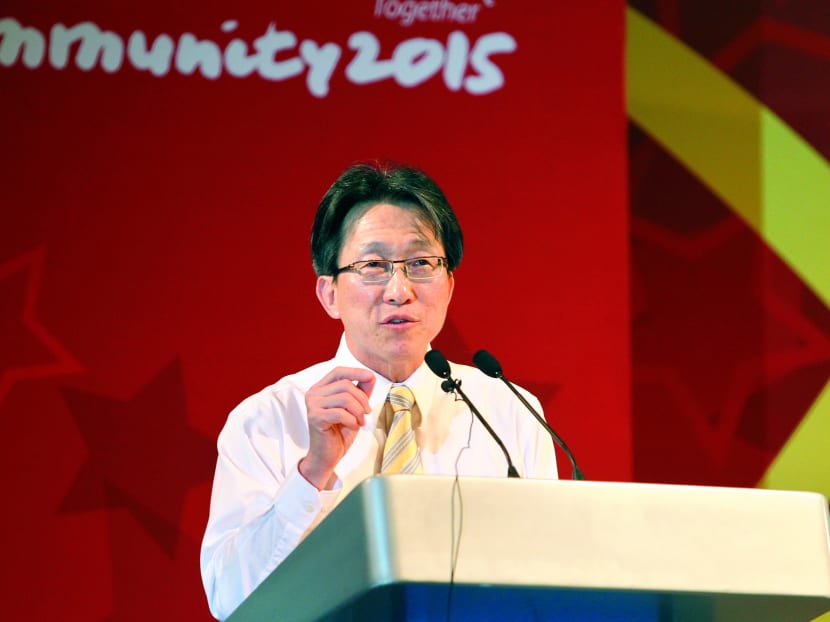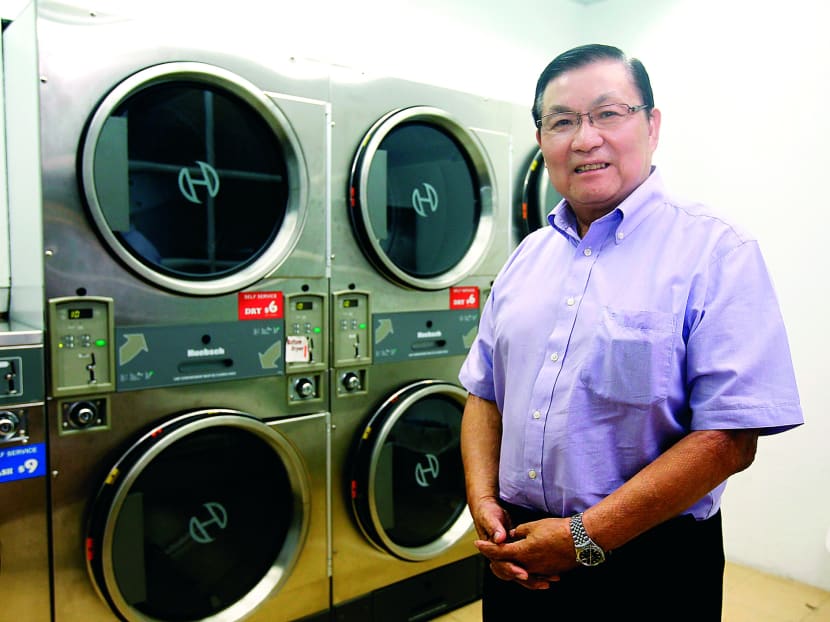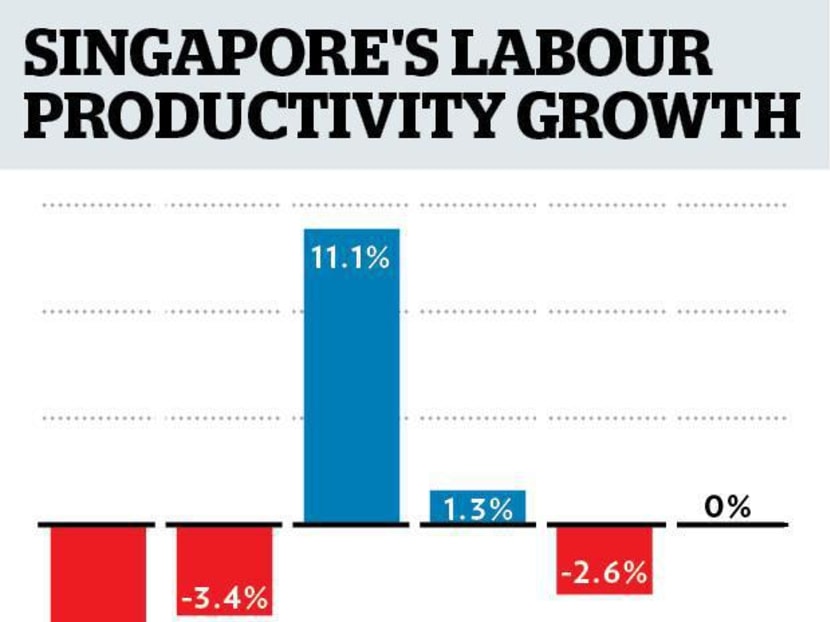Productivity gains not the only plus for firms on PIC scheme
SINGAPORE — Over the last two years, business software company Duration Inc has claimed a five-figure sum from the Productivity and Innovation Credit (PIC) scheme for upgrading its computers. Its founder Jonathan Chua, however, said the objective of getting the funds was “not really a matter of productivity”.



SINGAPORE — Over the last two years, business software company Duration Inc has claimed a five-figure sum from the Productivity and Innovation Credit (PIC) scheme for upgrading its computers. Its founder Jonathan Chua, however, said the objective of getting the funds was “not really a matter of productivity”.
“It was due to the amount of savings, as our expenses would be lower ... we would have bought the new computers anyway,” said Mr Chua, who has not actively measured the company’s productivity gains since it benefited from the scheme. The savings could be used to hire another worker, for example, he said.
Laundry services company Laundry Network is another company that has tapped on national schemes to raise productivity. Apart from the PIC scheme, it has benefited from funding administered by the Employment and Employability Institute to help companies raise productivity.
Laundry Network has used the funds to pay for two-thirds of the total costs of a S$300,000 laundry system and a S$200,000 IT system.
As a result of the considerable outlay, the company’s overall productivity has increased by 8 per cent, said its Chief Executive Officer Chan Tai Pang, who owns two plants, six satellite Laundromats and 25 retail outlets.
“Productivity increases in my industry would be limited. This is because machines can’t replace humans for everything, we still need labour to load and offload dirty laundry,” he said.
Both Duration Inc and Laundry Network — as well as other companies TODAY spoke to — said the Inland Revenue Authority of Singapore (IRAS), which administers the PIC scheme, does not track companies’ productivity gains from using the scheme.
Last month, Deputy Prime Minister Tharman Shanmugaratnam announced during his Budget speech that the PIC scheme will be extended by three years to 2018, at an additional cost of S$3.6 billion. Over the past two days of the Budget debate, several Members of Parliament have asked about the scheme’s effectiveness, with some calling for a review.
The scheme was started in 2010, with the Government setting aside S$480 million each year for it. The figure rose to S$520 million a year when the scheme was enhanced in the 2011 Budget. In 2012, the cash payout was raised to 60 per cent, from 30 per cent, of up to S$100,000 of companies’ total expenditure. Last year, the Government introduced a PIC bonus, budgeting S$450 million over three years.
According to the IRAS, two out of three small and medium enterprises (SMEs) with turnover of more than S$1 million have claimed benefits under the PIC scheme.
A recent post-Budget survey conducted by KPMG among 80 senior executives found that more than half (58 per cent) admitted to using the PIC scheme to defray operating expenses, instead of using it to raise productivity.
KPMG Head of Tax Tay Hong Beng said: “It is quite challenging to establish a direct relationship between expenditure on a specific item and immediate productivity outcomes. Some companies may use the PIC scheme to defray immediate operating costs by buying computer equipment or investing in training, but the improvement in productivity may only become obvious in the longer term.”
Limited productivity gains
Singapore’s productivity growth has been poor in the last five years, apart from a one-off surge in 2010 due to a strong cyclical recovery. Last year, there was zero productivity growth, compared with -2.6 per cent in 2012.
The Ministry of Trade and Industry (MTI) and IRAS did not respond to questions put to them last week, on whether they track companies’ usage of the grants under the PIC scheme or conduct follow-up actions to advise and assist companies to improve productivity.
Based corporate income tax returns filed as at November last year, about 45,500 companies — or 37 per cent of all active firms — benefited from the PIC scheme in Year of Assessment 2012.
IRAS said that across all industry sectors, there was an increase in PIC adoption in YA2012. The manufacturing sector has the highest adoption rate, followed by the utilities sector and the construction sector. The construction and food and beverage industries have lagged behind others in terms of productivity improvements.
The Timbre group of restaurants has claimed close to a six-figure sum from the PIC scheme, but it has seen limited productivity improvements so far. It has implemented iPad ordering systems and combination ovens, which have shaved waiting times for customers. But its Managing Director Edward Chia said: “The reason why we are not seeing a big gain in productivity is because the unit cost of labour has gone up faster than the productivity increases. The tightened labour market has led to salaries for labour going up. If it continues to tighten, then it will really place a limit on how much more productive we can be.”
Under the PIC scheme, companies can apply for claims under six categories. For YA2012, 63 per cent of claims went to automation equipment, and 33 per cent went to training. Only 4 per cent of the claims are related to the other four categories — acquisition of intellectual property rights, registration of patents, trademarks and design, research and development (R&D) activities, and design projects.
While some businesses and MPs have raised concerns about the stringent criteria to qualify for grants under R&D activities, some companies told TODAY that smaller firms, especially start-ups, will be more concerned about their basic needs such as equipment and staff training.
Mr Vincent Wong, General Manager of search engine optimisation company Top3 Media, said the company only recently started thinking about R&D activities to develop its proprietary software. “We started off claiming for staff training and machinery, and then we focused on growing our business as an SME. Now, we need to take more time to think about what kind of software to develop that isn’t already widespread in Singapore,” he said.
Start-ups which have not applied for the PIC scheme cited the criteria and the amount of paperwork involved as reasons why they are not keen to tap on the programme. Ms Tahira Sultan, President of Mobile Alliance — a group of start-ups — noted that smaller companies do not have the headcount to meet the minimum requirement of having three Singapore citizens or Permanent Residents on their books.
Employees need to play their part
Companies that have tapped the PIC scheme pointed out that for productivity improvements to take root, workers’ mindsets have to be changed.
Enterprise development manager Kwan Lifeng of precision machining company CKE Manufacturing noted that even though firms spend money on upgrading their equipment or improving their processes, workers also have to play their part.
He said: “Sometimes you plug, but people just don’t want to play. It takes a lot to persuade the staff to buy into the productivity culture. I have seen instances where the rank and file just don’t follow the work flow that the new software requires, and ... this does not fulfil the true promise of productivity.
“There is only so much the Government can do, they cannot control how far productivity measures are being utilised in each company.”






